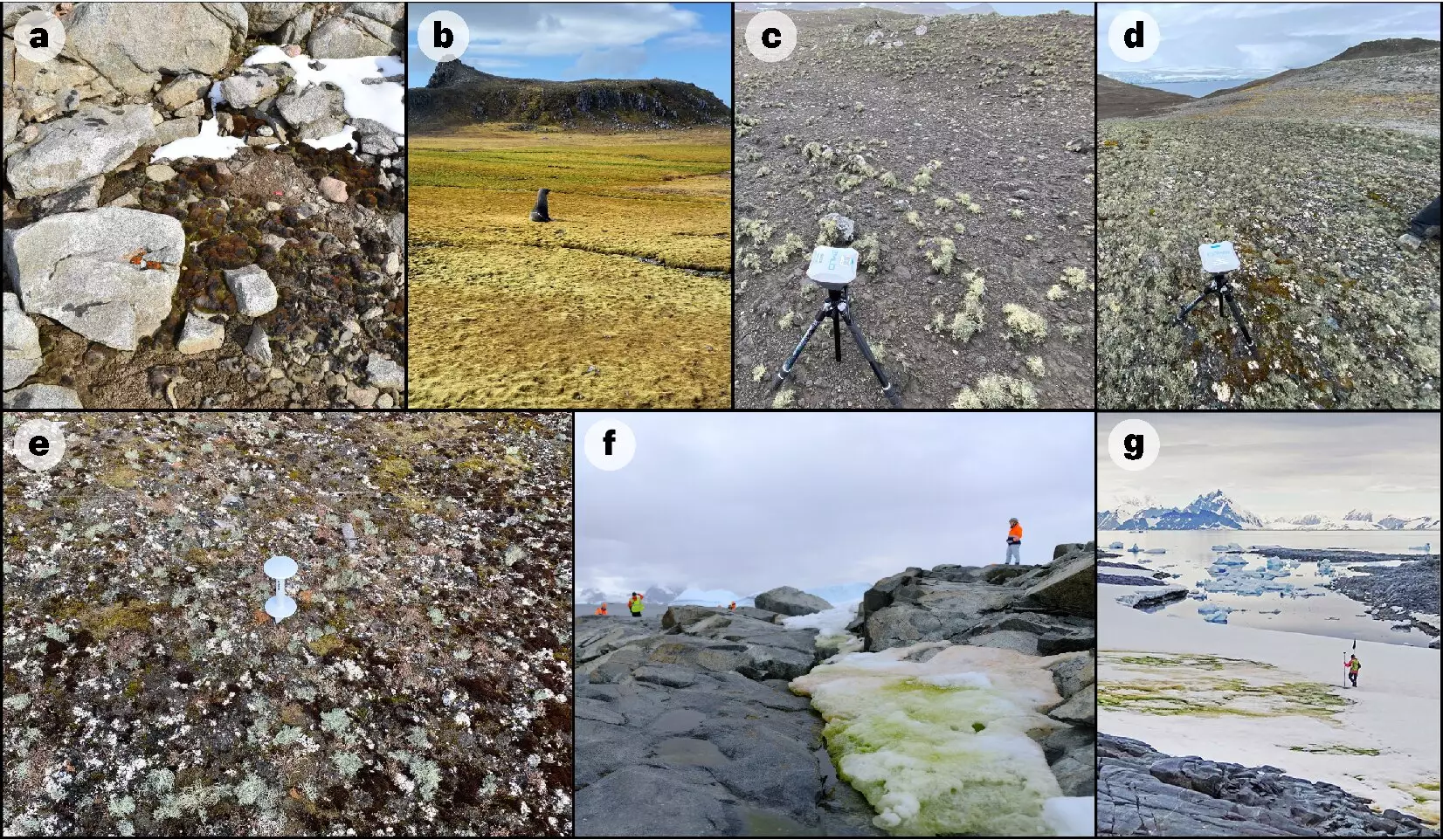Recent research marks a milestone in ecological studies by providing the first continent-wide mapping of plant life in Antarctica. This extensive study, published in the esteemed journal *Nature Geoscience*, reveals significant growth in previously unexplored regions of the icy continent. The mapping project is poised to enhance our understanding of climate change impacts on vegetation in such a harsh environment, potentially reshaping conservation strategies in the area and beyond.
Employing a European Space Agency satellite, the research combines advanced remote sensing technology with precise field measurements conducted over multiple summer seasons. This innovative approach allowed scientists to detect nearly 45 square kilometers of vegetation, equating to approximately three times the expanse of Lake Windermere in the Lake District, U.K.
The international collaboration features notable institutions, with the University of Edinburgh leading the project alongside Norwegian Institute for Nature Research, British Antarctic Survey, and Scottish Association for Marine Science. They found that over 80% of the detected vegetation was concentrated in the Antarctic Peninsula and its surrounding islands. While this might sound substantial, it’s crucial to realize that these findings represent merely 0.12% of Antarctica’s entire ice-free area. Such a minuscule fraction raises concerns regarding the inadequacy of current conservation measures, particularly under the Antarctic Specially Protected Area (ASPA) framework.
The vegetation in Antarctica, primarily composed of resilient mosses and lichens, has adapted remarkably to thrive in extreme conditions. Each vegetative type is vital for local carbon and nutrient recycling processes. Until now, the comprehensive knowledge regarding their distribution and abundance across the continent was alarmingly sparse. This new mapping effort sheds light on their habitats, providing a keystone reference point for assessing climatic shifts over time.
The existing body of research underscores that the environmental sensitivity of these flora species makes them reliable indicators of regional climate change. As the planet warms, understanding how these resilient species behave within Antarctica—a landscape virtually untouched by human activity—can yield invaluable insights about their counterparts in other delicate ecosystems, such as those found in the Arctic.
As detailed by researcher Charlotte Walshaw, the newly generated continent-scale map reveals critical information regarding vegetation distribution in areas seldom explored by human researchers. This fundamental discovery could drastically alter our understanding of where and why vegetation flourishes in Antarctica, allowing for improved and targeted conservation efforts. Dr. Claudia Colesie emphasizes the resilience of these organisms, affirming that only the most tenacious species can withstand Antarctica’s extreme living conditions.
Armed with precise mapping data, scientists can now advocate for the introduction of more focused conservation strategies aimed at sustaining these unique botanical communities. Recognizing that certain regions hold a higher concentration of vegetation than others prompts a proactive stance in environmental stewardship.
Another noteworthy aspect of this research, as highlighted by Dr. Andrew Gray, is the low impact nature of remote sensing techniques. These methods provide a less intrusive way to study the fragile ecosystems of Antarctica while allowing for the monitoring of vegetative changes over time. This aspect is of utmost importance given the delicate balance of such environments and the potential for climate change to cause rapid alterations.
This landmark continent-wide vegetation mapping study exemplifies the imperative intersection of technology, research, and conservation. The findings deliver not only significant insights for Antarctic ecology but also serve as a clarion call for greater protective measures and ongoing monitoring in response to climate change. As global ecological systems face unprecedented challenges, this research lays the foundation for hopeful futures—not just for Antarctic flora, but potentially for similar ecosystems facing threats around the world.
The study stands as a testament to human curiosity and resilience, inviting continued exploration into the mysteries of our planet’s most extreme environments.


Leave a Reply